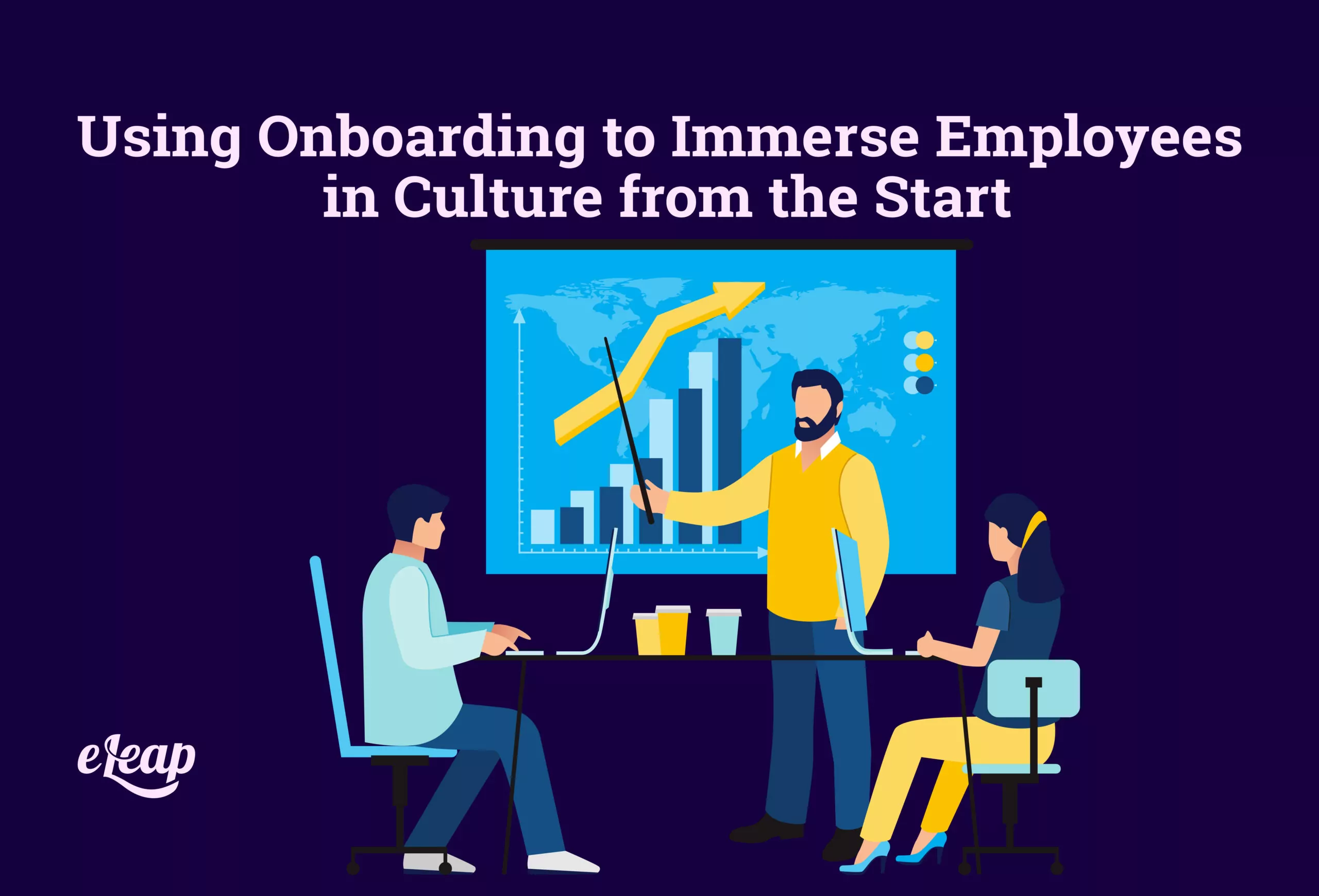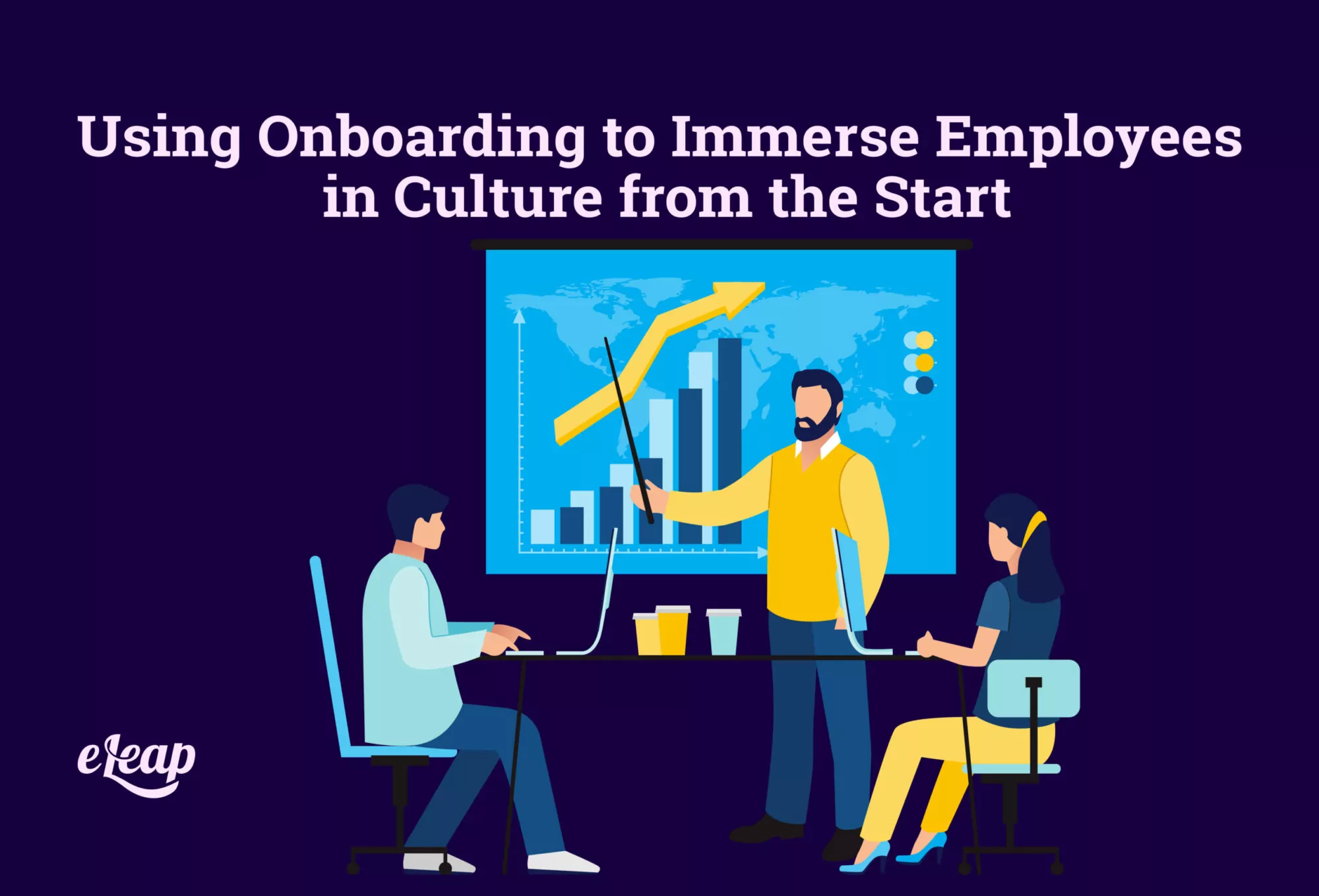Using Onboarding to Immerse Employees in Culture from the Start

Not only are HR teams and managers tasked with onboarding people and training them into their roles, but now they also have to make sure that they’re training employees in the culture from day one. In fact, for best results, culture immersion and training should start well before day one.
While it’s obvious that some of the market-leading companies have cultures that some could only dream of, it’s not as obvious that the facilitation of that culture and the successful implementation of it depends entirely on HR and the employee onboarding process. Yes, you need to find top talent. However, you also need to make sure that you utilize onboarding to build trust and create alignment with all of your people.
When you do it right, employee onboarding will ensure that new hires are brought right into the culture and into their roles, so they’re ready to dive in from the start. Everyone is excited when they’re just starting a new position or working with a new company. However, if that excitement isn’t properly fed, it could create stagnant employees that are essentially set up to fail because they weren’t brought into the culture correctly.

Start with Your Mission, Vision, and Values
These elements are the foundation of any successful organization today. Being able to actually live and work by them is even better, and that’s where it’s essential to get people on board from the first moment you speak to them. Lead everything with your vision and values and watch how people feel their way into the culture during the onboarding process.
Leverage your onboarding platform to help you introduce people, welcome new hires, and showcase just what the company is all about. Create a digestible format that can be accessed by your new hires even before their first day. This will give them time to consider the company’s message and get connected with their new coworkers well before they hit the front door (physically or metaphorically, for those who are still working remotely).
Showcase Past Culture Events and More
You have to set the mood here. How do you want people to feel about your culture? Do you want to ensure that everyone is engaged from the start? One way to do that is to showcase previous cultural events and happenings, as well as to be transparent about the culture and not only where it is, but where it has come from. Several companies include their company culture as a critical part of onboarding. You should be one of them.
This is a great place to show off events that went really well. It’s also a chance for you to showcase learning opportunities—perhaps you tried to have a field day but the weather didn’t cooperate, or you wanted to try a new employee activity, but it didn’t pan out—showcase those, too, so that people can see that you’re constantly trying to innovate and come up with new ways to get people involved.
Create Clear Goals that Include Cultural Engagement
The most successful organizations are those that set goals for their employees, not just based on their performance, but also based on engaging with the culture and getting involved in the workplace beyond their work. You shouldn’t force people to attend events or engage in cultural happenings, but you should encourage it and encourage people to set their own goals for getting involved. After all, that feeling of connection is often what will set companies apart when it comes to creating that culture that today’s employees demand, and every organization craves.
Consider ways that you can include culture in onboarding, such as pairing your new hire with someone a bit more seasoned, kind of like a buddy system, if you will. Then, that person can help show them around, introduce them to others, and help them get involved in the culture.
Did you know that the leading reason new employees don’t get engaged in culture right away is that they don’t know how? You can’t assume that the new hires know just to show up for the food truck event on Friday, or that they’re welcome to the weekly brainstorming breakfast—they aren’t going to assume it, either. Consider creating a list of regular activities and events for people, kind of like introducing a group at a seminar. Encourage, but don’t mandate participation and engagement.
If you do it right, they’ll engage because they want to, not because it’s required of them.
Encourage Questions and Interest
Perhaps the best thing that you can do is to encourage your new hires to ask questions and never be afraid to speak up if they don’t feel engaged or know how to get involved. When you know where your process works and where it doesn’t, you’ll be in a much better place to make changes and ensure that your culture is integrated from the moment people are even considered for a position on your team.
83% of executives said that motivated and engaged employees were the leading factor in a company’s success. Why wouldn’t you want to capitalize on that? Let people come to you with questions or concerns. Allow them to challenge the status quo and encourage their engagement with culture from the moment they accept the offer. That way, you’ll be more likely to get the cultural improvements that you want because everyone is on the same page.
Beyond the Buzzword
“Culture” is taking a hit lately because it’s become such a hot-button topic for companies. However, in light of the Great Resignation, it only makes sense that companies start shaping up their culture and answering to the employees who are demanding more. By taking these things into account, leaders will be better prepared to get employees immersed in the culture as soon as possible. Leading with culture will ensure that your people are engaged, new candidates feel included, and fewer people slip through the cracks, creating gaps in the culture that you have been working toward. Contact us today for a free consultation on how to improve your company culture and increase engagement.